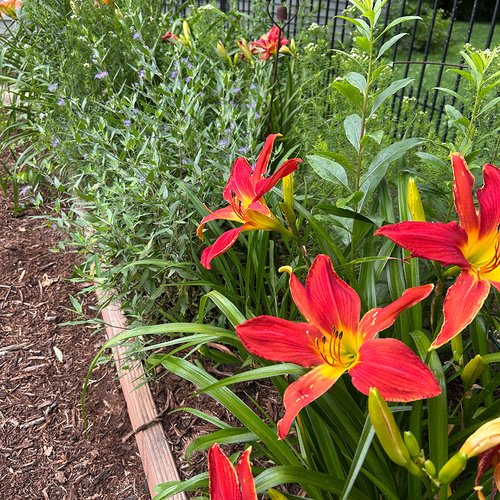Hi GPODers!
We have another lovely late-summer landscape to admire on the blog today, and this one dazzles in both the sun and shade. Margaret Onken in St. Louis, Missouri, is a self-proclaimed “wannabe amateur,” but the vibrancy of her late-season beds and borders—from the deepest pockets of shade to sections of intense, full sun—show that her “amateur” abilities have already created a garden that many would envy.
I live in St. Louis, Missouri, with a small yard that provides both sun and shade. I wouldn’t call myself an amateur gardener. I’m a wannabe amateur! At this time of year, St. Louis gardens start to look a little tired. The weather is very hot and very dry in August. I have quite few bleeding hearts (Dicentra spectabilis, Zones 3–9) and bluebells that I transplanted this summer. Can’t wait to see how things pop up in Spring ’26! Look forward to sending more pictures then.
I started a woodland garden two years ago in our backyard by clearing out almost a ¼ acre of honeysuckle and weeds, keeping the walnut and sycamore trees, along with a few crabapples I found hiding in the scrub. I’m still figuring out what a woodland garden should look like, how to meander through it, and wait for my bushes and trees to grow. In the meantime, I kept the wild American jumpseed (Caryopteris incana, Zones 5–9)—it’s tall and, with its delicate white shoots, has a tranquil feel against the Canada Red chokecherry (Prunus virginiana ‘Canada Red’, Zones 3–8).
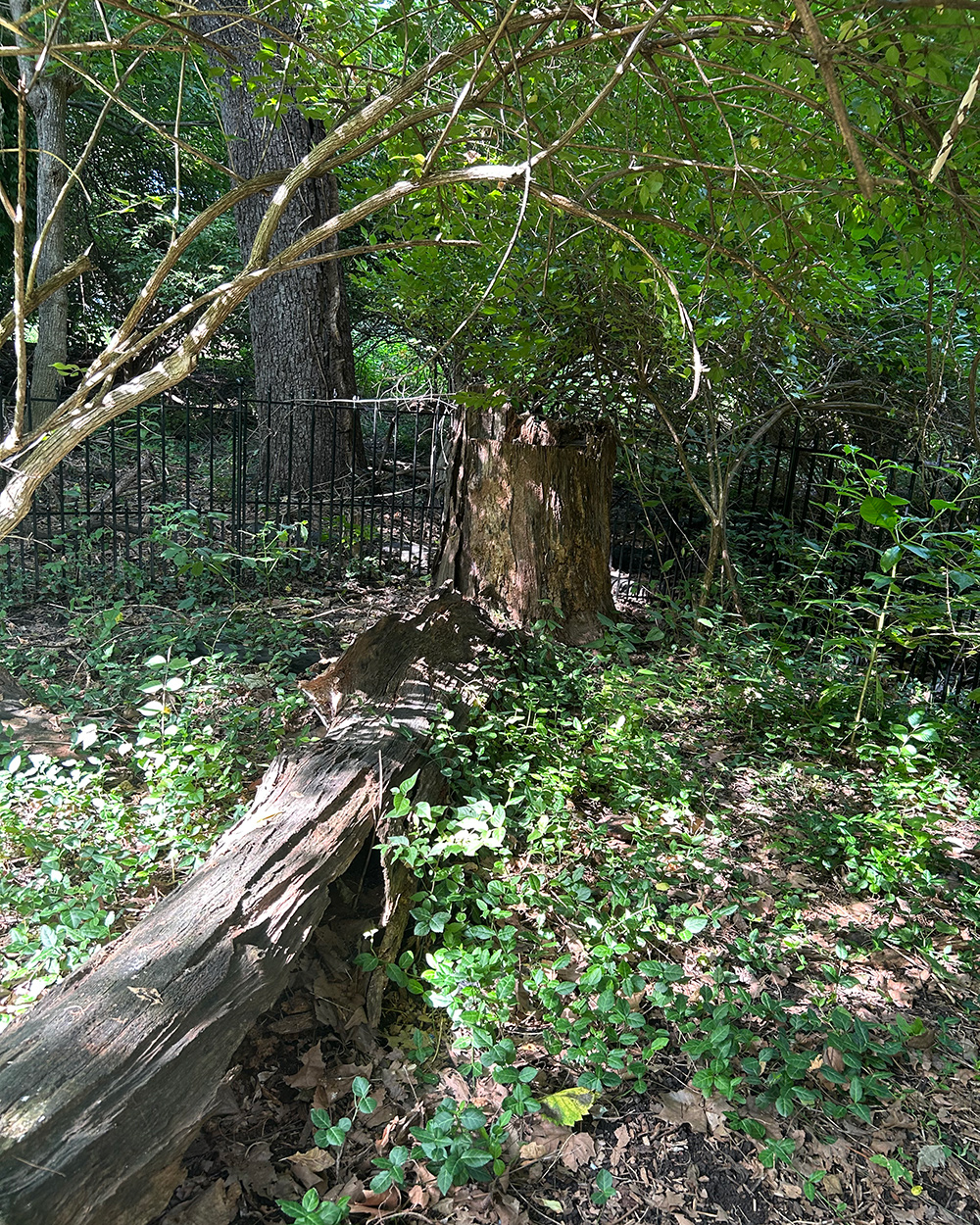 I also kept a downed tree and stump. It’s cool and serene in the shade with plenty of moss covering it. Lots of wild ginger (Asarum canadense, Zones 4–6) and myrtle (Vinca minor and cvs., Zones 4–9) covering the ground as well.
I also kept a downed tree and stump. It’s cool and serene in the shade with plenty of moss covering it. Lots of wild ginger (Asarum canadense, Zones 4–6) and myrtle (Vinca minor and cvs., Zones 4–9) covering the ground as well.
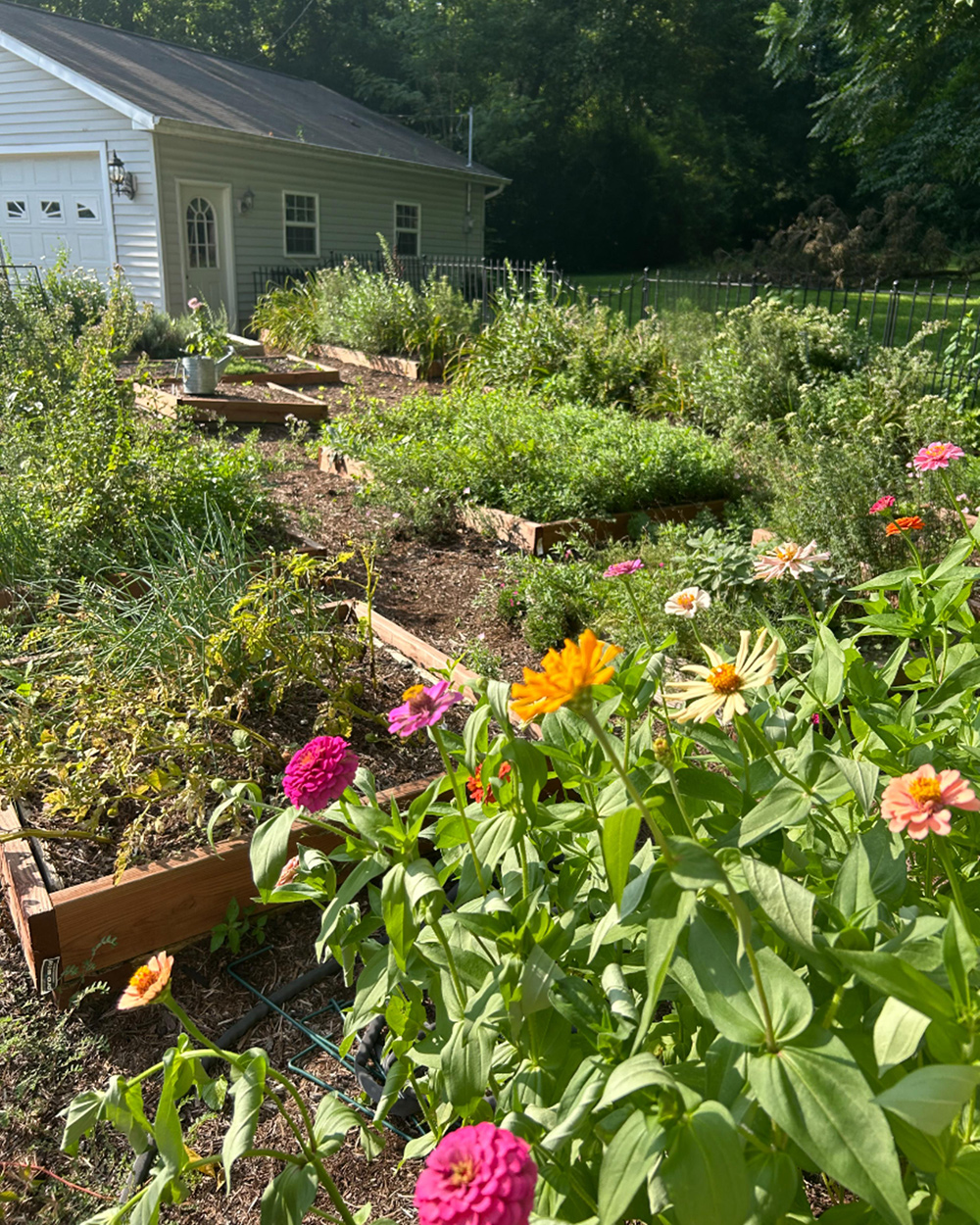 Over the years, my husband and I have built raised beds for the sun garden. I like the structure for vegetables and herbs. I have some sun-loving perennials as well.
Over the years, my husband and I have built raised beds for the sun garden. I like the structure for vegetables and herbs. I have some sun-loving perennials as well.
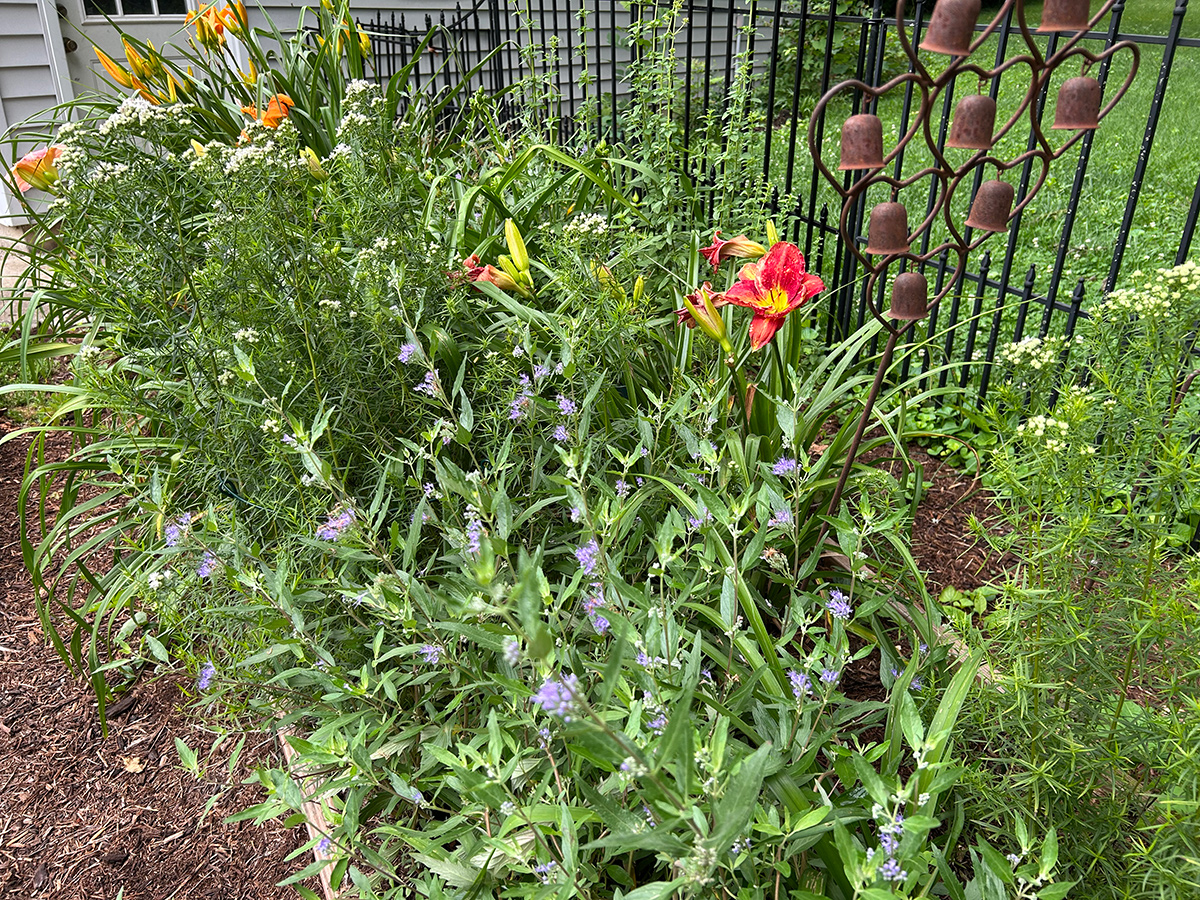 I have two large beds that started as daylilies of all sizes and colors, which are wonderful for St. Louis, but as the deer have become more frequent, I’ve moved in some bluebeard (Caryopteris incana, Zones 5–9) and slender mint (Pycnanthemum tenuifolium, Zones 4–8). They keep blooming when the deer snip off the daylily buds!
I have two large beds that started as daylilies of all sizes and colors, which are wonderful for St. Louis, but as the deer have become more frequent, I’ve moved in some bluebeard (Caryopteris incana, Zones 5–9) and slender mint (Pycnanthemum tenuifolium, Zones 4–8). They keep blooming when the deer snip off the daylily buds!
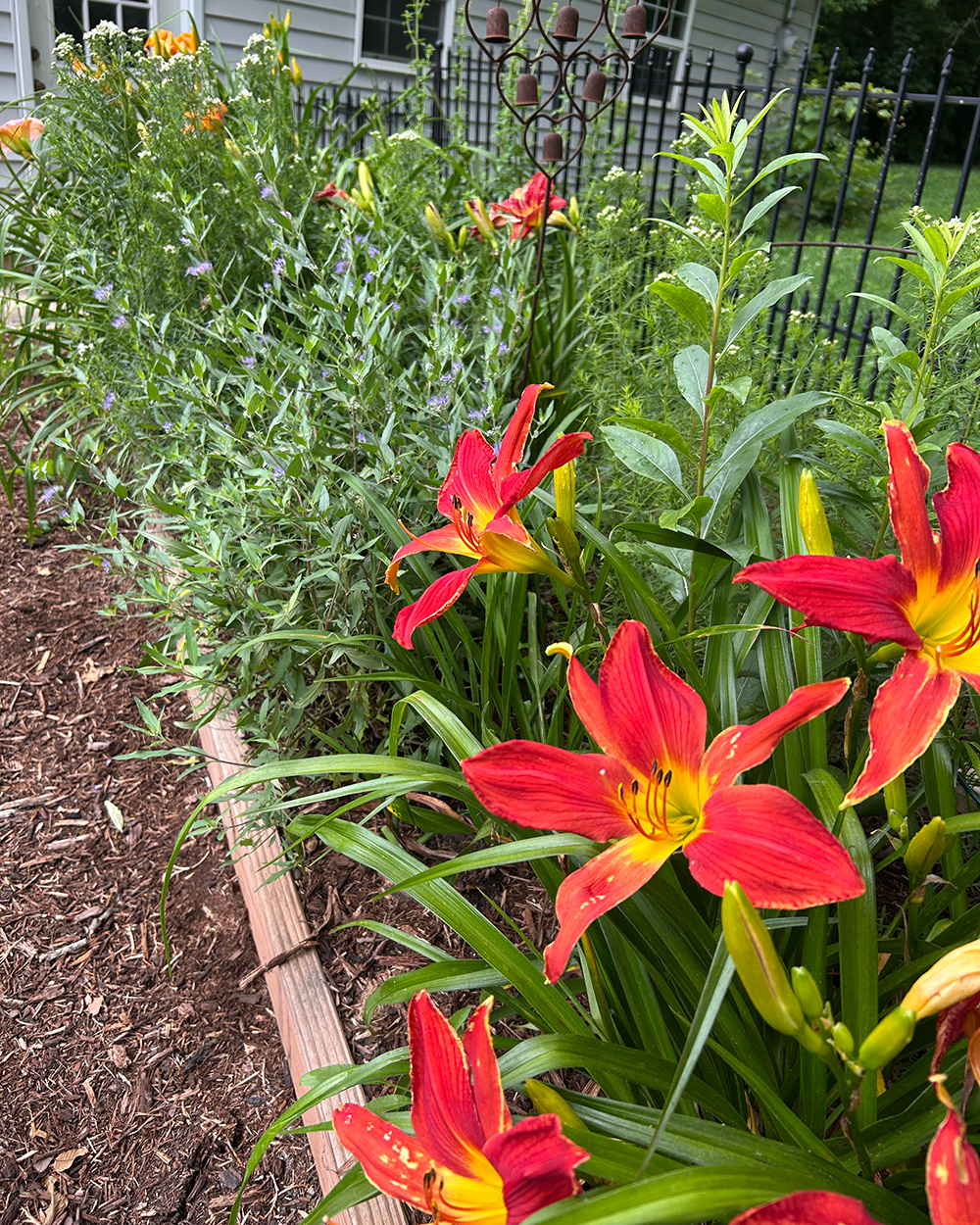 A closer look at those bold and beautiful daylilies
A closer look at those bold and beautiful daylilies
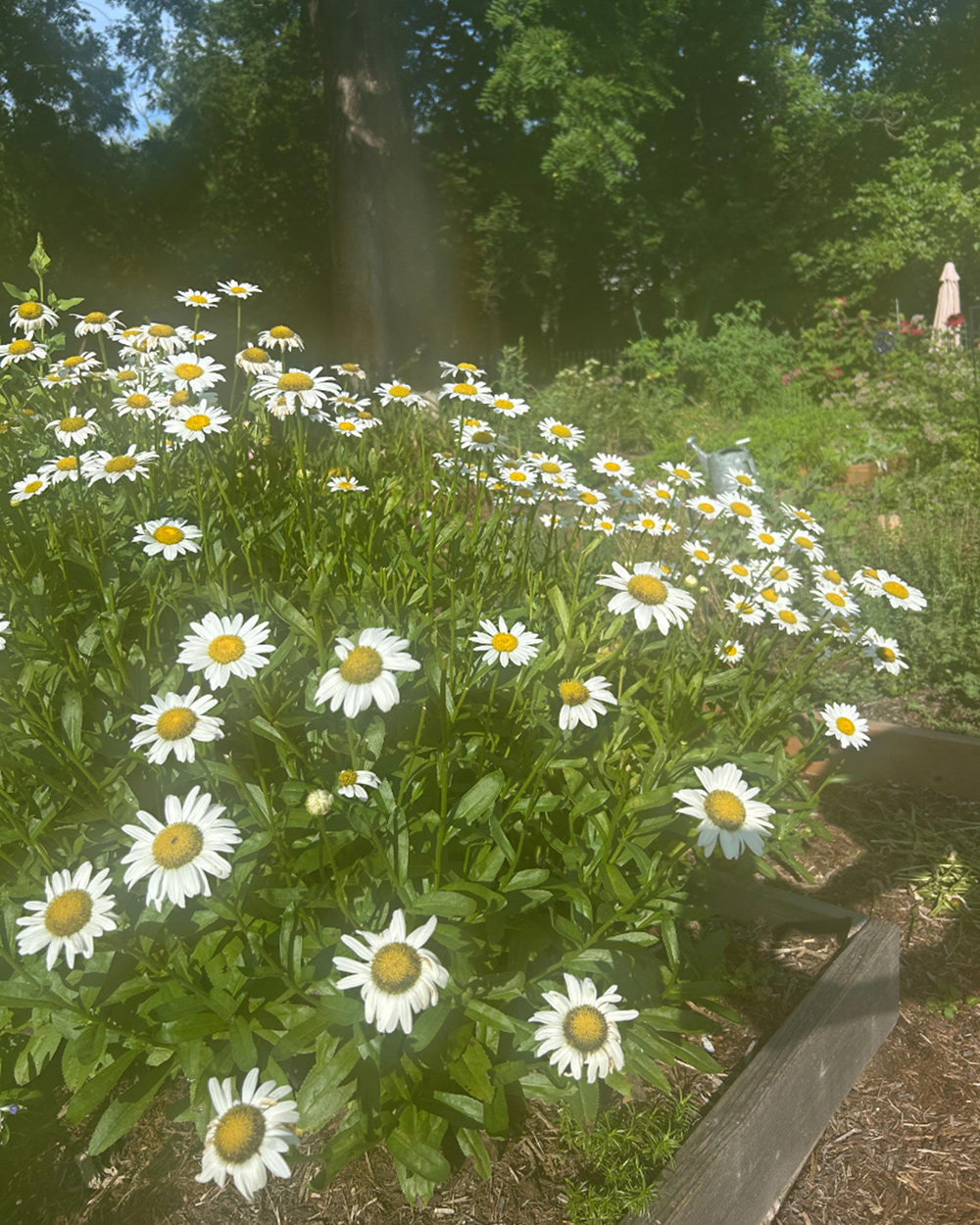 Of course, no sun garden is complete without some daisies! My leucanthemums (Leucanthemum × superbum, Zones 4–9) are a little worn out by now but soak up the St. Louis sunshine like few other flowers!
Of course, no sun garden is complete without some daisies! My leucanthemums (Leucanthemum × superbum, Zones 4–9) are a little worn out by now but soak up the St. Louis sunshine like few other flowers!
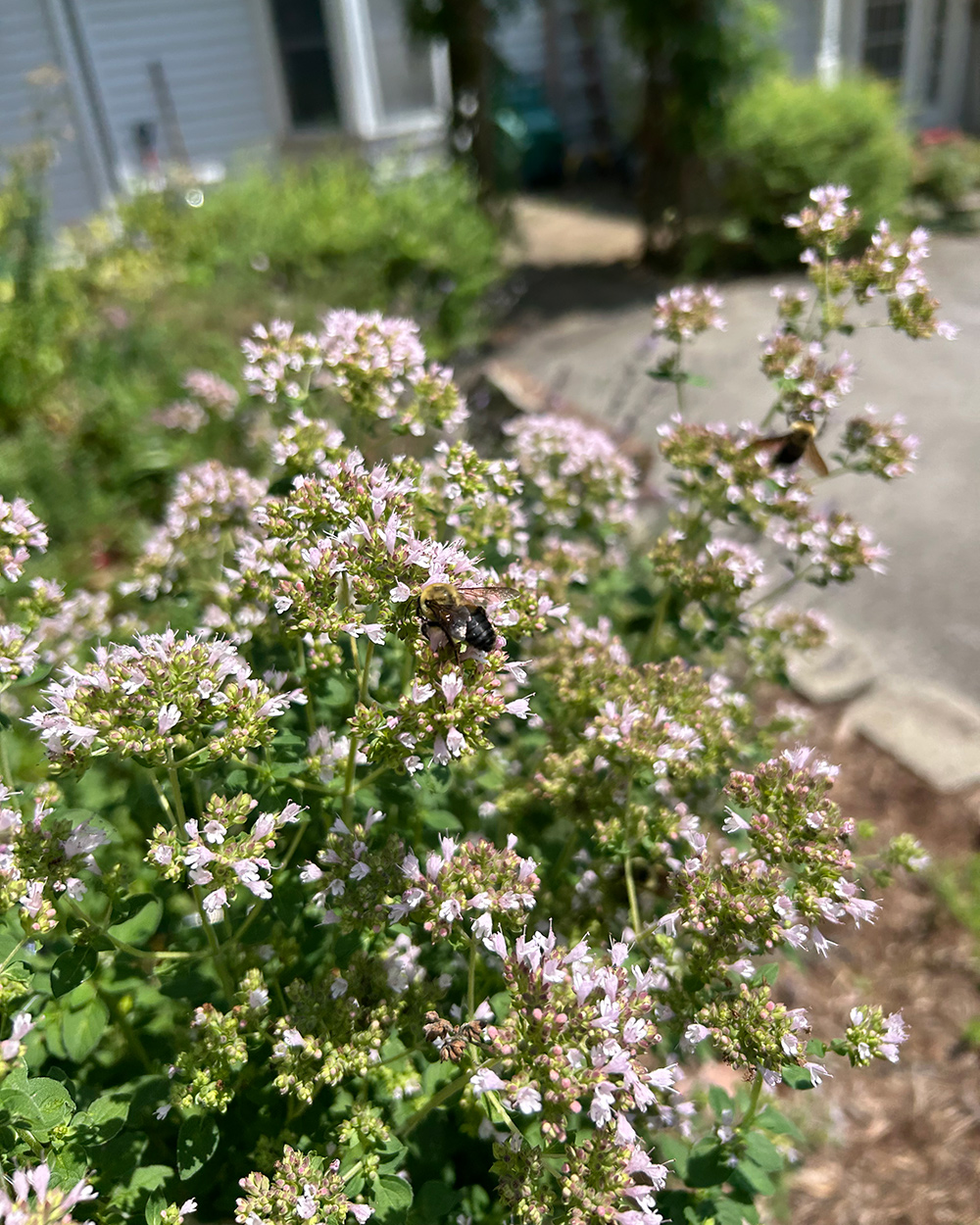 I love the herbs, as they keep our frequent deer away. The bees love them too, especially the oregano.
I love the herbs, as they keep our frequent deer away. The bees love them too, especially the oregano.
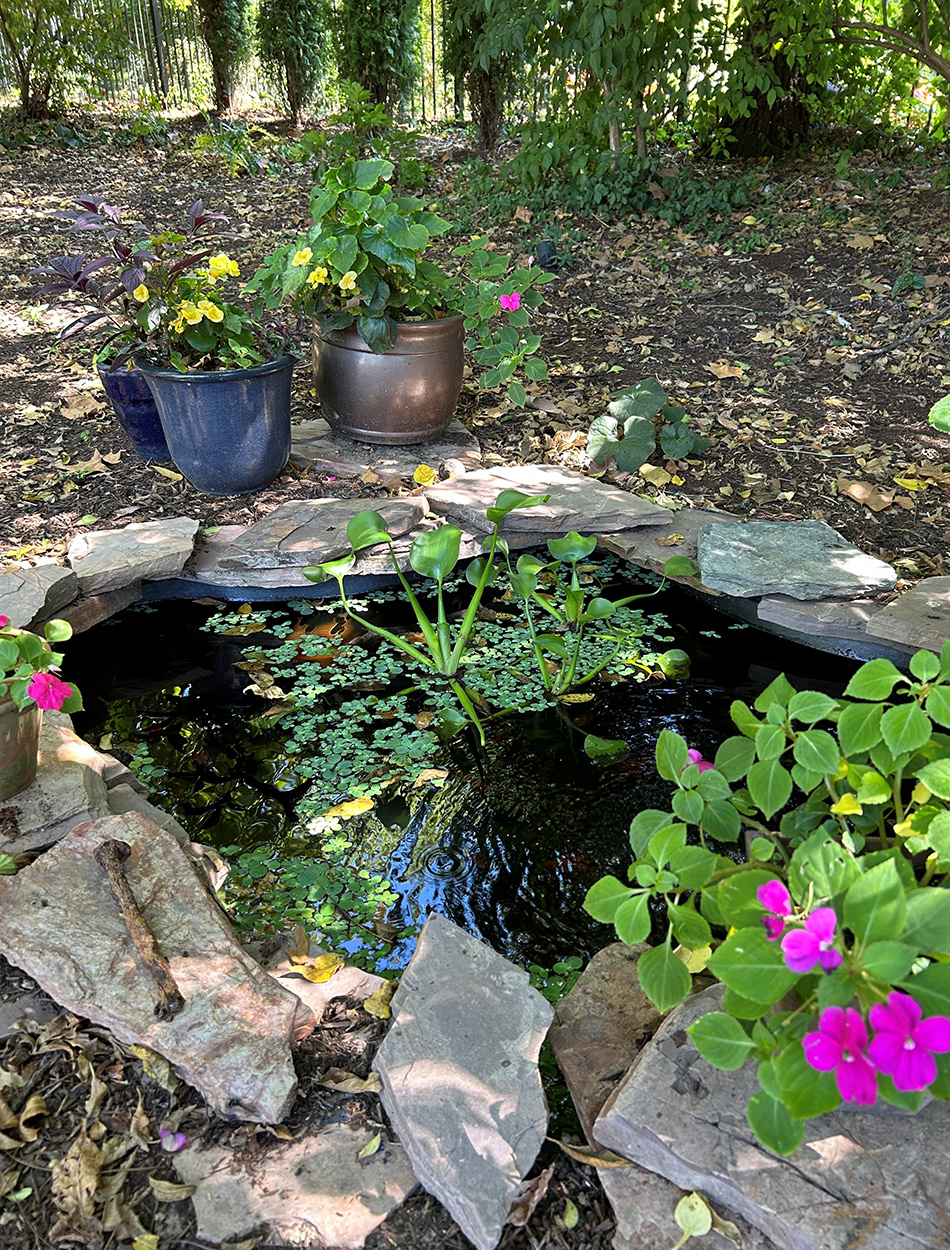 I built a little fountain-pond to add a water element. The water hyacinth (Eichhornia crassipes, annual) and water lettuce (Pistia stratiotes, annual) love it! The impatiens, begonias, and caladium pots do as well!
I built a little fountain-pond to add a water element. The water hyacinth (Eichhornia crassipes, annual) and water lettuce (Pistia stratiotes, annual) love it! The impatiens, begonias, and caladium pots do as well!
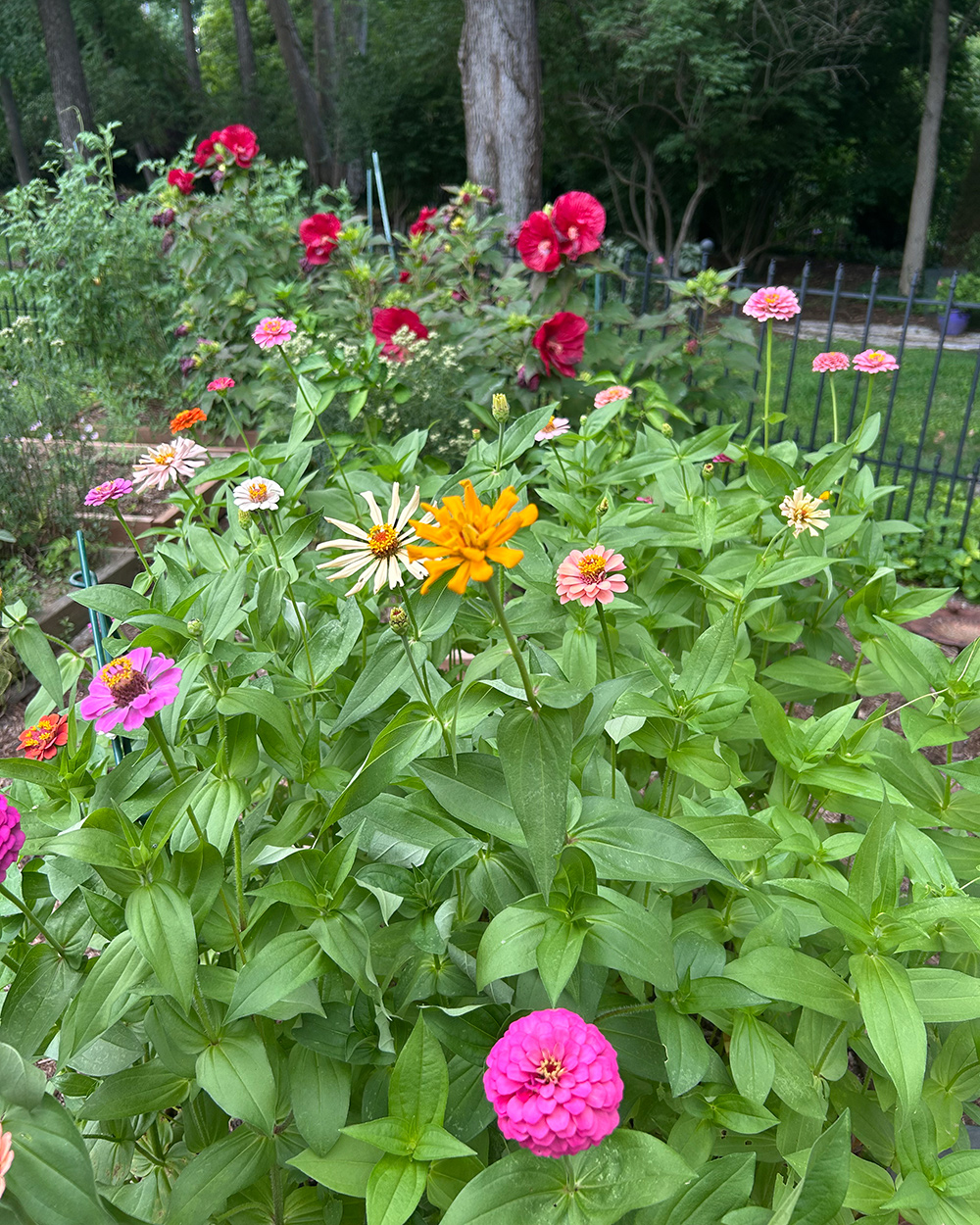 Thank goodness for the zinnias and hibiscus! My husband gave me a hibiscus on my birthday three years ago – I just plopped it in where I had room, but boy, was it the right spot!
Thank goodness for the zinnias and hibiscus! My husband gave me a hibiscus on my birthday three years ago – I just plopped it in where I had room, but boy, was it the right spot!
Thank you so much for sharing this sampling of your sun and shade gardens with us, Margaret! I’m already looking forward to seeing how you continue to develop and update your space in the next growing season.
I hope more “amateur” gardeners like Margaret feel encouraged to share their plantings with Garden Photo of the Day! While it’s always exciting to see the mature spaces that experienced gardeners have been tending for decades, it’s equally exciting to see the newer plant people share their first signs of success. No matter how many years you’ve been tending to your garden, consider sharing your designs with the blog. Follow the directions below to submit photos via email, or send me a DM on Instagram: @agirlherdogandtheroad.
We want to see YOUR garden!
Have photos to share? We’d love to see your garden, a particular collection of plants you love, or a wonderful garden you had the chance to visit!
To submit, send 5–10 photos to [email protected] along with some information about the plants in the pictures and where you took the photos. We’d love to hear where you are located, how long you’ve been gardening, successes you are proud of, failures you learned from, hopes for the future, favorite plants, or funny stories from your garden.
Have a mobile phone? Tag your photos on Facebook, Instagram, or Twitter with #FineGardening!
Do you receive the GPOD by email yet? Sign up here
Fine Gardening Recommended Products

Sungmor Heavy Duty Cast Iron Urn Planter
Fine Gardening receives a commission for items purchased through links on this site, including Amazon Associates and other affiliate advertising programs.
Decorative plant pot made of solid cast-iron material, painted in rustic white color, finished with anti-rust coating, that will last for years. Rustic design plus enough space to plant makes this a perfect outdoor and garden planter. A great way to add beauty to your small garden oasis.
Size: height: 10.2 inches; bottom diameter: 4.0 inches; opening diameter: 7.87 inches. Makes a great garden gift.
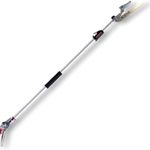
ARS Telescoping Long Reach Pruner
Fine Gardening receives a commission for items purchased through links on this site, including Amazon Associates and other affiliate advertising programs.
Telescopes from 4 to 7′. Cut and Hold (160) Blades. Drop forged blades for unsurpassed long lasting sharpness. Lightweight, 2.3 lbs., for continued use. Perfectly balanced for easy pruning.
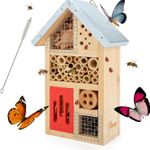
Niteangel Natural Wooden Insect Hotel, Garden Insect House for Ladybugs, lacewings, Butterfly, Bee, Bug
Fine Gardening receives a commission for items purchased through links on this site, including Amazon Associates and other affiliate advertising programs.
The insect nest box provide a safe environment where garden creatures can shelter, hibernate and lay their eggs, the insect house can also keep insects from entering your warm room. The insect hotel makes it easy to find and observe fascinating creatures. the butterfly, bees and ladybugs can use this product as habitat. Dry wood and Bamboo can be home to many insects such as ladybirds and lacewings which eat aphids and help keep your plants pest-free. the insect hotel improve the growth of plants in your yard by attracting beneficial insects. The iron design on the top can keep the insect house from rainwater. Let the insect house have a longer useful life and make the insects more comfortable. If you only have a balcony or yard, the hanging garden shelter is ideal as it provides a choice of suitable habitats in a small area.


